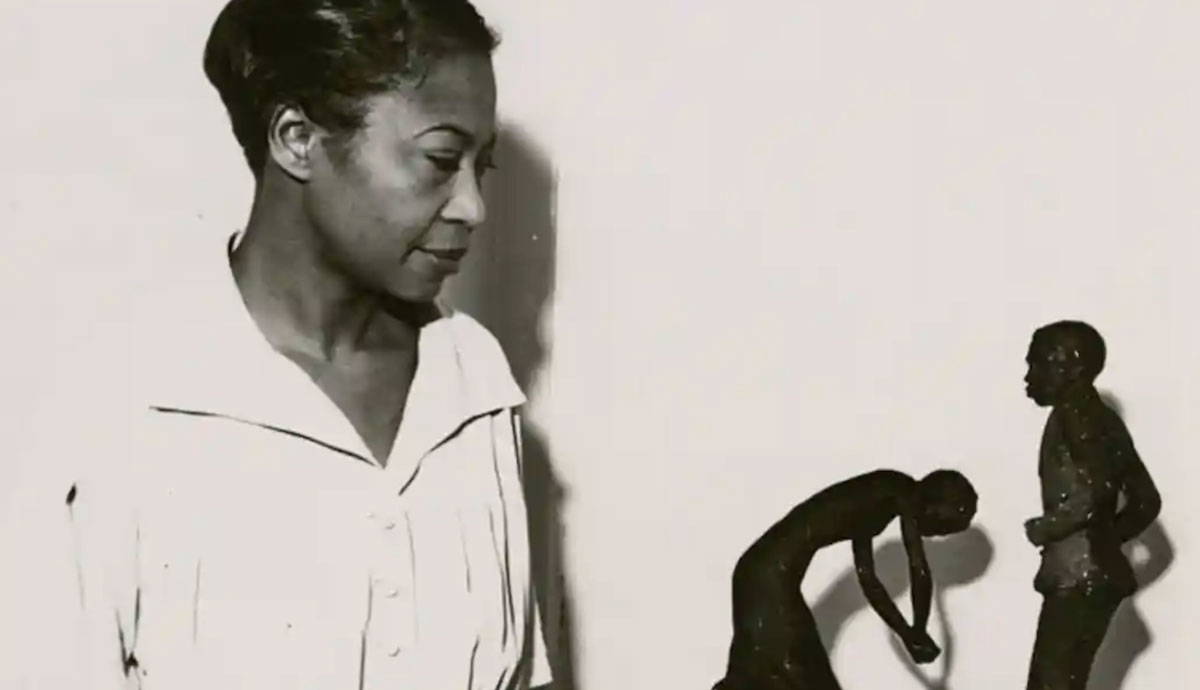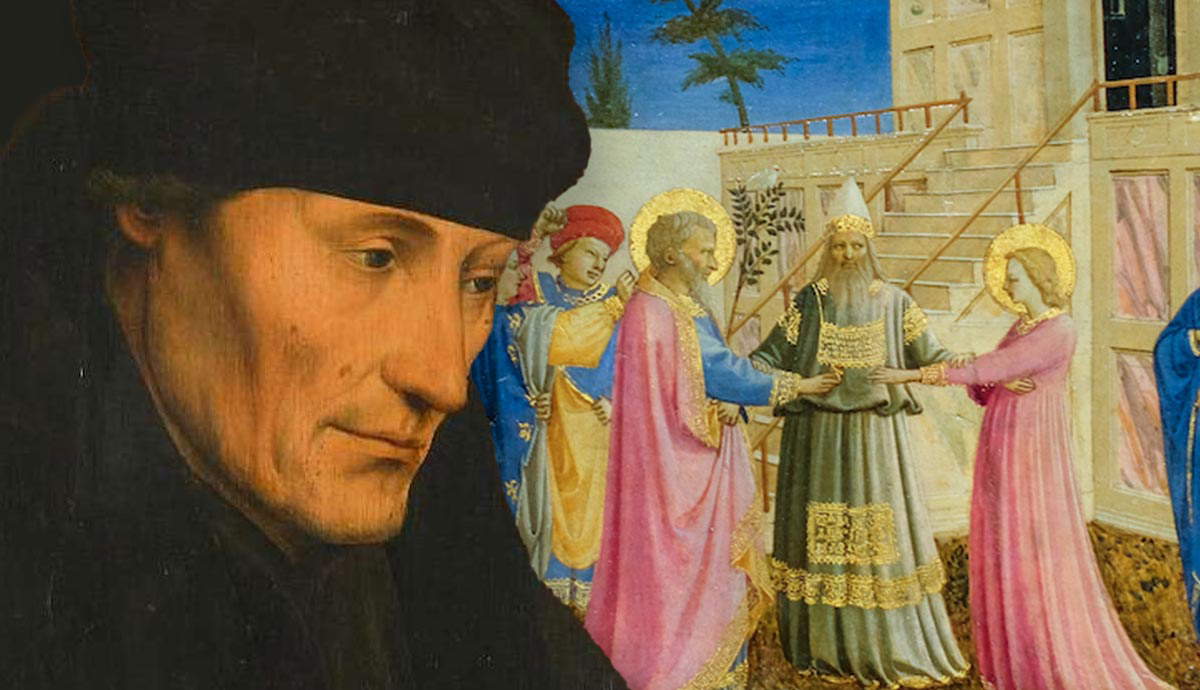
The African American sculptor Augusta Savage received national and international acclaim, but her career was also characterized by her fight against racism. Despite facing discrimination and economic hardships, she was a successful sculptor and dedicated art educator who received important commissions and had a positive impact on her community. Here are six things you need to know about the groundbreaking artist Augusta Savage.
1. Augusta Savage Started Making Sculptures at a Young Age

Augusta Savage was born in 1892 in Green Cove Springs, south of Jacksonville, Florida. She started making sculptures out of the red-clay soil found in the area. Along with her thirteen siblings, she was the child of a conservative Methodist minister who did not approve of Savage’s artistic inclinations. She said that her father almost whipped all the art out of her.
Savage married when she was only 15 years old and gave birth to her daughter in 1908. Her husband died shortly after the birth of their child. Savage then lived in West Palm Beach where her high school principal discovered her artistic abilities and encouraged her to instruct her fellow classmates in modeling sculptures. She had her first exhibition in 1919 when she showed clay birds at the West Palm Beach County Fair. She sold some of her works there and won a blue ribbon, as well as a $25 prize.
Augusta moved to New York in 1921 with only $4.60 in her pocket. There, she worked as an apartment caretaker, while taking classes at the Cooper Union for the Advancement of Science and Art. The sculpture course there was supposed to take four years to complete, but Augusta Savage graduated after only three years. Her time in New York also coincided with the Harlem Renaissance.
2. She Was Associated with the Harlem Renaissance

Augusta Savage lived and worked in New York when the African American cultural movement called the Harlem Renaissance was in full swing. It was a period during which great artists working in the fields of music, theatre, literature, and visual arts emerged. One of their goals was to create a proud identity that rejected stereotypes. In this photo with Eleanor Roosevelt, Augusta Savage is depicted next to Gwendolyn Bennett, a writer who was also associated with the Harlem Renaissance and whom Augusta Savage taught in her studio.
Savage was known for her portrait busts. She was commissioned to make busts of important figures like W. E. B. Du Bois and Marcus Garvey. Marcus Garvey was a Jamaican Black nationalist and founder of the Universal Negro Improvement Association who was also active in Harlem. William Edward Burghardt Du Bois was an American sociologist and activist whose book The Souls of Black Folk had a significant influence on members of the Harlem Renaissance. Working on a piece about him caused Savage to become more involved in politics.
3. She Didn’t Get a Scholarship Because She Was Black

Along with 100 other women, Augusta Savage was awarded a scholarship in 1923 to study at the Fontainebleau School of Fine Arts in France for the summer. The scholarship, however, was withdrawn because she was Black. Two other women who were supposed to share housing with Augusta refused to do so because of her race. This caused a scandal. William Edward Burghardt Du Bois stood up for her, but the committee refused to re-offer her the scholarship.
One of the members of the committee was American sculptor Hermon A. MacNeil. He was the only one in favor of Savage getting the scholarship.
In 1923, Savage married Robert L. Poston who died one year later. She then worked in a laundry service in order to support nine family members who were living with her in her three-room apartment in Harlem after their house was destroyed in a hurricane. In 1929, Augusta Savage was finally able to go to study in Paris through the Julius Rosenwald Fellowship, which was awarded to the artist for her sculpture titled Gamin. The piece shows Savage’s nephew Ellis Ford. He was one of the family members who were living with her in Harlem. She stayed abroad until the end of the year 1931.
4. She Taught the Famous African American Painter Jacob Lawrence

Savage came back to Harlem and founded the Savage Studio of Arts and Crafts in 1932. There, she taught famous artists like Jacob Lawrence, Norman Lewis, and Gwendolyn Knight. Lawrence is known for his series about the Great Migration. When Lawrence was asked in an interview about artists who influenced him, he mentioned Augusta Savage. He talked about how she helped him get work at the WPA Federal Art Project, which funded visual arts in the United States. She was a supporter of art created by other young people too. Lawrence even said that coming in contact with Augusta Savage was one of the highlights of his entire career.
Savage’s work as a teacher was an important part of her career. She advocated for the recognition of African American artists and their employment in the WPA projects. Augusta was also appointed the first director of the Harlem Community Art Center in 1937. A few years earlier, in 1934, Savage became the first African American member of the National Association of Women Painters and Sculptors which is now called the National Association of Women Artists.
5. Her Work Was Commissioned for the New York World’s Fair

In 1937, Augusta Savage was commissioned to create a work for the New York World’s Fair. The theme was the contribution of African Americans to music. She and three other women were the only female artists who were hired, while Savage and William Grant Still were the only African Americans. Savage created a work called Lift Every Voice and Sing, which was also called The Harp.
It was inspired by a poem by James Weldon Johnson titled Lift Every Voice and Sing for which his brother wrote the music. It is also known as an African American national anthem. It starts with the following lines:
Lift every voice and sing
Till earth and heaven ring,
Ring with the harmonies of Liberty;
Let our rejoicing rise
High as the listening skies,
Let it resound loud as the rolling sea.
Sing a song full of the faith that the dark past has taught us,
Sing a song full of the hope that the present has brought us.
Facing the rising sun of our new day begun,
Let us march on till victory is won.

The sculpture Savage made for the 1939 New York World’s Fair was a sixteen-foot-high piece cast in plaster. She depicted the strings of the harp as Black singers. It was her last commission and the work is still one of her most famous pieces. Since casting the sculpture in bronze was too expensive for the artist, the work was unfortunately destroyed.
6. Augusta Savage Opened Her Own Art Gallery

To finish her sculpture for the New York World’s Fair, Augusta Savage took a break from working at the Harlem Community Art Center. When she came back, she found out that someone else was hired to do her job. So, she opened her own art gallery called the Salon of Contemporary Negro Art in 1939. This made her the first African American woman who opened an art gallery in the United States. The gallery exhibited works created by African American artists. At the opening, which 500 people attended, Augusta Savage said: We do not ask any special favors as artists because of our race. We only want to present to you our works and ask you to judge them on their merits. Unfortunately, the gallery had to close after three months because of financial problems.
Augusta Savage consequently withdrew from her artistic career and moved to a farm in the Catskill Mountains in Saugerties, New York in 1945. She still worked as an educator at local summer camps for children and sometimes visited New York. Savage even sculpted some pieces for tourists. She also became interested in writing, so she wrote murder mysteries as well as stories for children. However, these were never published.
She moved back to New York in 1962 and died of cancer that same year. Her work as an artist has been the subject of an exhibition titled Augusta Savage: Renaissance Woman in 2018. It was held at the Cummer Museum of Art & Gardens in Jacksonville, Florida, and at the New York Historical Society. The curator of the exhibition Dr. Jeffreen Hayes said that she saw Augusta Savage as a person who didn’t just create artworks but who really left behind a blueprint of what it means to be an artist that centers humanity.










